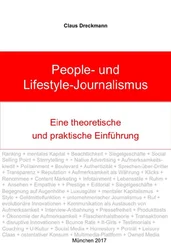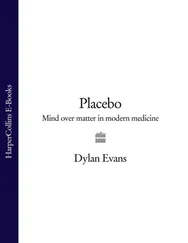Fasting, known as Vrat or Vratam , is fundamental to the Hindu religion.
Although meat consumption is allowed in nonvegetarians, meat products such as those derived from pork, fowl, duck, snails, crabs, and camels are not preferred, as animals are considered part of the chain of life and should be treated with compassion. Because cows are considered sacred animals, beef intake is prohibited; however, the consumption of dairy products derived from cow, such as milk, yogurt, and butter, is allowed as they are considered to be pure and to contribute to the purity of body, spirit, and mind.
In Judaism, believers consume only what is considered to be kosher , i.e., whatever has been prepared in agreement with the dietary regulations of Kashrut . Kashrut, which means “proper” or “correct,” is a set of dietary laws determining the foods that Jews are permitted to eat and how they should be prepared. These laws are spelled out in detail in the written Torah, Leviticus 11. The dietary laws have the added benefit of preventing contamination and improving health. For example, Kashrut defines the proper handling of kitchenware, determines that the only types of meat that may be eaten are cattle and game that have “cloven hooves” and “chew the cud” (e.g., sheep, cattle, goats, and deer), notes that kosher and nonkosher foods cannot be served in the same plate, and states that meat and dairy products should be separated. After meat meals, one must wait several hours before eating dairy. However, after dairy consumption, no interval is required before meat may be eaten.
Kashrut is a set of dietary laws determining the foods that Jews are permitted to eat and how they should be prepared.
The Jewish calendar has comparatively few days of fasting. Besides the Day of Atonement (Yom Kippur), which is the only fast day prescribed by the Mosaic law, there are only four regular fast days in commemoration of various historical events. Fasting lasts from sunrise to sunset, and the participants abstain from all food and drink, including water.
Halal (permissible) and Haram (forbidden) are the main concepts of Islamic dietary laws and are used to designate what is lawful to be eaten and what is prohibited for Muslims. Foods whose consumption is ambiguous are called Mashbooh . Muslims must follow these laws and never disobey irrespective of their age, sex, and caste.
The dietary laws of Islam have many similarities with dietary laws of Judaism. The followers of Islam eat foods that purify their body and spirit from all kinds of dirt and impurities, based on what Allah commands. For example, all kinds of birds are permitted expect for prey birds. In Islam, all kinds of vegetables, fruits, and crops that are not contaminated are allowed. Animal meat is lawful for consumption when it has been properly slaughtered, except for meat that is specifically forbidden (e.g., pork). The prescribed method of ritual slaughter of all lawful halal animals is called Dhabihah.
The followers of Islam eat foods that purify their body and spirit from all kinds of dirt and impurities.
Islam discourages overconsumption of food and the intake of stimulants (such as coffee, tea, alcohol). Muslims fast on Mondays and Tuesdays and for a 6‐day period during the 10th month of the Islamic year, named Shawwal. However, their most renowned fasting period is the holy month of Ramadan , the ninth month according to the Islamic calendar. During Ramadan, Muslims do not eat or drink anything from sunrise to sunset, approximately 13–18 hours/day.
Ramadan fasting has been associated with weight loss, attenuation of several metabolic markers (such as insulin resistance, high blood glucose, and high BP), improvements in lipid profile, prevention of chronic diseases (such as obesity, diabetes, CVDs, and cancer), and protection against neurodegeneration and inflammation. However, the results from the Epidemiology of Diabetes and Ramadan (EPIDIAR) study, which included patients with T1DM and T2DM, suggested that fasting during Ramadan can result in an increased number of hypoglycemic episodes. Education on diabetes management and medication adjustments prior to Ramadan has been shown to help overcome these problems.
In a systematic review and meta‐analysis of 70 publications with a total of 2947 subjects, a significant reduction in body fat was found between the pre‐Ramadan and post‐Ramadan period, but only in overweight or obese individuals. However, a significant loss of fat‐free mass (i.e., muscle and bone) was also found between pre‐Ramadan and post‐Ramadan. Nevertheless, 2–5 weeks after the end of Ramadan, weight and body composition returned to pre‐Ramadan levels, as is the case when any kind of diet based on caloric restriction is discontinued.
Fasting is a popular religious practice among many Christians. In many denominations, especially Protestant groups, there are no specific food restrictions or fasting days (although some groups prohibit alcohol or caffeine consumption). Prayer and fasting are often combined as preparation for important decisions or to seek God’s blessing or guidance. However, other Christian denominations have more specific guidelines.
For example, the Greek Orthodox Church advises fasting for 180–200 days throughout the year, i.e., approximately 6.5 months/year. The diet during fasting resembles a vegetarian‐style dietary pattern. Avoidance of meat, fish, milk, eggs, and cheese is recommended on Wednesdays and Fridays. The major fasting periods of the year are 40 days before Christmas, 48 days before Easter, and 15 days prior to the Assumption of Virgin Mary (August 15th). During the fasting before Christmas, devotees do not eat meat, eggs, and dairy, but they can eat fish and olive oil all days except Wednesdays and Fridays. Pre‐Easter fasting has the same dietary restrictions as Christmas, but during this period fish consumption is permitted twice, on March 25th (the Annunciation) and on Palm Sunday. Olive oil consumption is permitted only on weekends.
Orthodox fasting does not impose any restriction on the consumption of mollusks, shellfish, and snails, which are consumed freely during these periods. Animal‐derived products are stored during this period in order to be consumed after the end of fasting. Similar to other religions, the dietary suggestions of the various Christian denominations are associated with low rates of chronic degenerative diseases, and they constitute a sustainable practice with positive financial implications.
Compliance with Orthodox Christianity not only offers a theological structure but also a flexible lifestyle pattern with health benefits. Orthodox fasting periods are characterized by a restriction in total energy and fat intake and an increase in the consumption of carbohydrate and fiber. Lipid profile seems to be optimal, while the reduction in total cholesterol and LDL‐C levels is consistent across studies. However, the effect on HDL is still uncertain. Results regarding the impact on body weight and glucose homeostasis are conflicting, and a definite conclusion cannot be drawn. Further investigation is needed to evaluate the potentially negative effect of orthodox fasting on vitamins D and B 12and mineral (mainly calcium) intake.
Compliance with Orthodox Christianity not only offers a theological structure but also a flexible lifestyle pattern with health benefits.
According to Roman Catholicism, the pious believers must fast on the prescribed fasting days by reducing food intake (allowing one full meal and two smaller) and refraining from consuming meat or meat products on these holy days. Fasting is obligatory for all Catholics 18–60 years old on Ash Wednesday and Good Friday, unless they are exempt for health reasons. Abstinence from meat is obligatory for those more than 14 years of age. The dietary laws are not universal in the Catholic Church; episcopal conferences are able to propose adjustments on the fasting laws for their home countries.
Читать дальше












